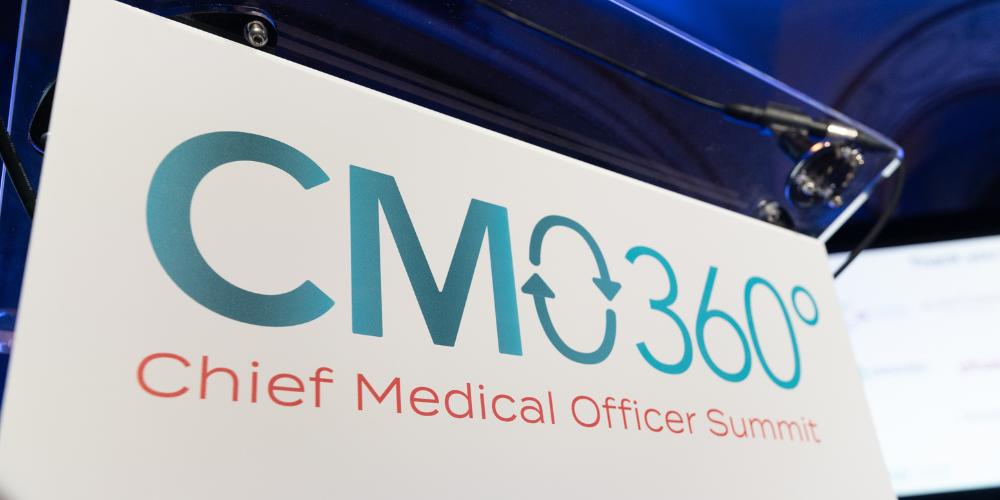
Cadmus Rich, MD, MBA, is the Chief Medical Officer and Head of R&D at Aura BioSciences.
How can CMOs prepare for the IPO Process?
As you’re getting ready for the IPO, make sure you have a strong C-team that is prepared to contribute to the process. That sounds simple, but it’s very important because really the IPO process is 90% driven by the C-team. Before you get to the IPO process, make sure all of your data, strategy and messaging are final. The messaging is going to be less scientific for investors than you would have at a scientific meeting so it is easier for investors to understand.
Then you want to get your direct reports and overall teams as strong as possible so they can operate independently. This is a multi-month process where the CMO is going to be pulled out of their normal work for an extended period of time and there’s just physically not enough hours in the day to do things and support you teams like you would normally do.
You also want to identify someone outside of the C-team who can help answer investor questions or quickly retrieve data because investors will have a lot of questions, such as how many patients had a history of some disease. Without that person, those questions can pile up. A key person in each key function will make this part of the process much less stressful. That’s all prep work for the IPO.
Can you speak about the stages of an IPO?
I consider generating and writing the S-1 document as the beginning of the IPO process, and it is done before you’re in the intense meetings. Of course, to write the S-1 you need to finalize all data and results you want to present and put in the S-1. After the S-1 is drafted but before you have your testing the waters (TTW) meetings, you have meetings with the banks and lawyers. These conference calls can have up to about 80 people and go through the S-1 line by line and edit it to make sure that everything is backed up by data and that everyone is comfortable with the statements and phrasing. While at the end of the day they defer to the company, I encourage people to take the bank’s feedback seriously because they’ve been through many more IPOs than you have.
Before or while doing the initial draft of the S-1 the company needs to pick your bank syndicate: who is going to take you public? You typically have around four banks that you work with: You have your main bank, which is called your lead left. Then you have a lead right and then you have some additional banks as bookrunners that help sell the IPO and work with the overall banking team. Picking your banks is critical. Your company may have a “bakeoff” where interested banks present and then you pick the banks you feel can work with your team, understand your product and company and who will represent you well.
The other part that’s important with the banks is the analyst you have with each bank. Every bank has their own analysts, who will write research reports about your company for investors to read. Not only do you want to like the banking team, you also want to like the analysts that will cover your company. In my mind, the analyst of the bank is as important as the bank. They need to understand the technology and data and they need to believe in the company’s plan. Remember, they are the ones who will be writing research reports on your company that are released publicly.
You choose the banks before the investor meetings?
Yes, you pick your banks and they help set up those 70 or so TTW investor meetings. You want to work with good banks because they have good relationships with the top investors. There are what are called the bulge bracket banks, which are the larger and more well-known banks, and other banks that may be smaller but more specialized in your area. The bulge banks may not need you as much as you need them, and some of the smaller banks may want a closer and more hands on relationship. So you need to strategize about your syndicate. Sometimes you don’t have a choice. Sometimes you put together a syndicate and you get three or four banks and that’s who you’re going to go with.
Typically, if you have enough banks, you have a ‘bake off’ to narrow them down. They come in and present on the lay of the land of current IPOs and what they think of your product and how they would position the company. This gives you a chance to see how aligned they are with your strategy and thinking. At this point, as mentioned above, you also want to strongly consider the analyst for each bank and how you work with them.
"I think of it as going to medical school. It is incredibly stressful but if you love science and medicine it is super fun."
What comes after choosing your banks?
Then you have to prepare your investor deck, which is basically a PowerPoint deck of your S-1 business section. It has to be reviewed by your board, management, banks and lawyers. As you go through the process with the banks and the C-team, you generate a Q&A sheet; you write down any and all questions that come up so you can review those periodically. I found that very helpful.
Then you prepare for the TTW meetings. These are meetings with interested investors that the banks line up. We had around 70 TTW meetings. Typically you have one per investor, and they are typically 45 minutes to an hour. That’s 70 hours of meetings, not to mention any time in between. This takes a few weeks. As you go through the TTW meetings, you also continually refine your verbal pitch and adjust to good questions based on feedback from the banks. The banks hear back from some of the investors they are friendly with, who provide feedback. You want to incorporate that feedback in the presentation as best you can while similarly updating the S-1 that will become public.
What happens after the TTW meetings?
After the TTW meetings and the feedback, you prepare for what’s called the roadshow. The roadshow is the week of the IPO launch. It is a second round of meetings with the banks and investors that are really interested in you and that you’re interested in meeting with again. We were fortunate to be able to pick several banks and investors that we liked, and we had about 30 meetings over the 4 days. The roadshow meetings are usually shorter because you’ve already met with a lot of them during the TTW meetings. However, a lot of the big banks and some of these bigger funds, don’t do TTW meetings so you may only have one meeting during the roadshow and you need to be on your game. And as you can imagine, you want to be positive and upbeat and excited in every one of these meetings which can be challenging.
At the end of the very last day of the roadshow the pricing discussion happens. The banks will advise on the public price and you may adjust your stock price based on your market capitalization and how many shares you are going to have outstanding. Sometimes based on pricing expectations, you may have a stock split of your existing stock. It can either go up by creating more shares or typically it is “reverse-split” where a certain number of shares become one share. Then you have the IPO – it is exciting to see your stock listed on the exchange but honestly this is kind of an underwhelming event because there’s nothing that really happens. You go out to the street and they sell your stock and you sit back and wait and see what happens over the course of the day. It’s like a race where you run, run, run and when you get to the finish line you walk across and then see what happens overall.
Any other advice for CMOs facing an IPO?
In general, I would tell a CMO who has not done this before to prepare as much ahead of time as possible. There are books and articles you can read about S-1 drafting, pitch deck drafting, meeting practice, Q&A document development and maintenance.
In these forty minute meetings, I was talking for over 20 minutes. It takes a toll on your voice too. You need to identify someone from your team to help you answer questions. After meetings I would email a specific person to look up data. I would get the answer and respond that evening or the following morning before the next round of investor meetings. You don’t want questions piling up.
Try to remain calm and know this is a stressful process. It is normal to feel stress. Staying calm and trying to have a positive outlook is critical. You need to work with and support your other C-team members with their parts and their stress. When everyone looks out for each other, you get strong teams. I think of it as going to medical school. It is incredibly stressful but if you love science and medicine it is super fun. Of course this is a condensed process which comes with a lot of time commitment and stress but is only a few months of time.
You also want to network with thought leaders so that when investors call thought leaders in the area, they know your technology and ideally your data. This start with setting up your Scientific Advisory Board and then branching out into the wider therapeutic area community. We have fantastic relationships with our ocular oncology thoughts leaders and we have a built a great SAB for urologic oncology and are branching out from there to increase our presence in this space as well. You can also find out who is publishing a lot and contact people who are involved in multiple clinical trials as they will be a strong part of that therapeutic community. The investors are going to do diligence and try to speak to a doctor they don’t think you know. If you get a key group who talk to each other, over time, everyone will know about your technology or asset.








